Best Snorkeling Flotation Belts & Other Buoyancy Devices
If you are not an experienced swimmer, handicapped, or senior having a good snorkeling flotation belt can make moving through the waters easier and more enjoyable. It can also help you stay in the water longer.
The best flotation snorkeling belt is one that is made out of durable and comfortable materials, it should fit well, and should be of the right size, shape, and color of your choice. Not every buoyancy belt on the market will do the job well, you need to take your time and find a good belt that will make your whole tour memorable. There is no need to waste your money on a rip-off.
If you’ve already chosen the location and the other required accessories, the following are some of the top-rated buoyancy belts for your snorkel vacation plus a guide on selecting the right one, as well as maintenance tips.
1. Speedo Aqua Belt
Speedo is a big name when it comes to water sports. This is an EVA Polymide belt that comes in classic blue color.
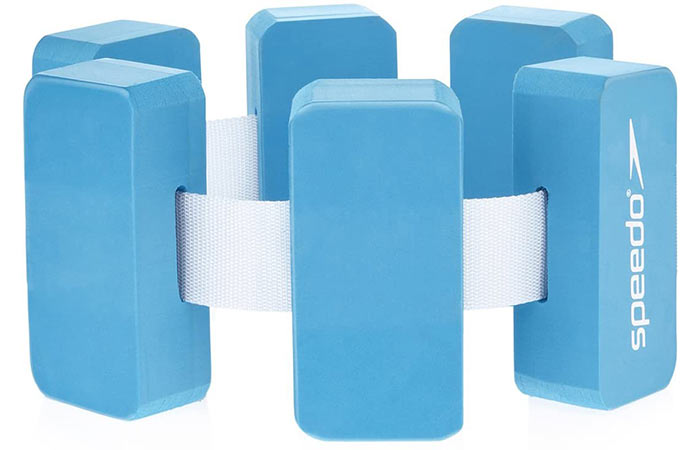
It is designed to keep you afloat in the water and offer support during every session. The adjustable levels of buoyancy are achieved through the aids that can be removed or added depending on how much support you require, making it easy to use and practical during different types of water activities.
This waist belt also comes with a quick-release button for easy putting on and off.
Pros
- Versatile
- Adjustable
- Durable
- Lightweight
Cons
- Come in one Size and color
Another one from speedo is the aqua fitness jog belt that comes in red and charcoal colors.
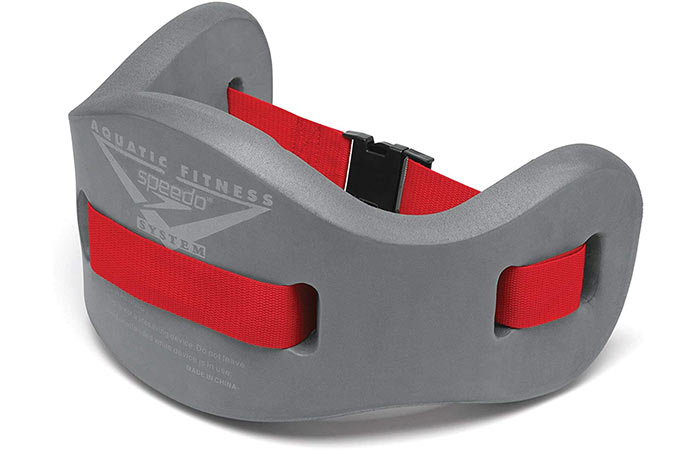
2. Aquajogger Pro Plus Belt
This is the perfect float belt for those who easily sink especially men or athletes with more muscle mass. This belt has 50% more buoyancy than the lassic Aquajogger belt.
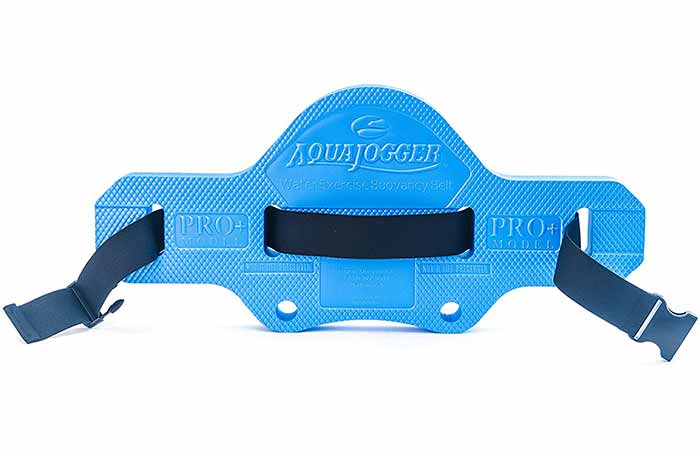
Easy-to-operate quick-release buckle ensures a hassle-free fit. Custom-woven elastic belt comfortably moves with every breath and adjusts to fit the waist
The resilient closed-cell foam from which it is made won’t absorb water, dries quickly and resists chlorine damage.
The patented contoured design supports and strengthens the lower back. Soft, flexible foam narrows at the waist for comfort and freedom of movement.
The Aqua Jogger design tones the abdominal muscles without doing a single sit-up due to the continual use of abdominal muscles to maintain correct posture. To accommodate different body shapes, belt can be worn upside down or with the foam in front of the body.
Aqua jogger also manufactures other float belts for women and juniors.
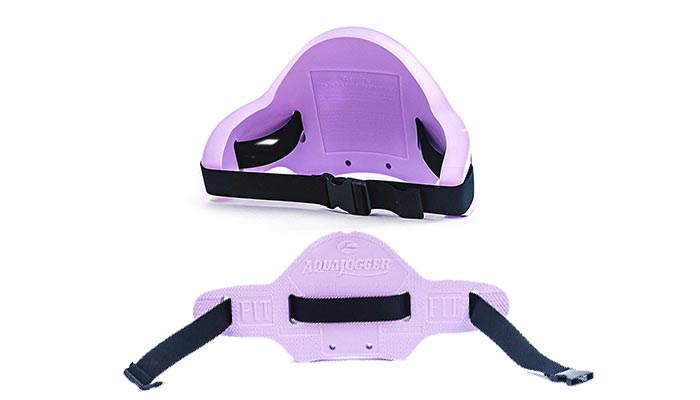
3. Water Gear Aqua Trim Water Belt
This a fully adjustable belt designed to hold securely and comfortably at the waist allowing you to keep afloat without losing any balance.

Designed to last for many years, the soft and comfortable closed cell EVA foam won’t chip, break or absorb water.
It can also be used for swimming pool exercises such as, water aerobics and aqua jogging.
4. WaterGym Water Aerobics Float Belt
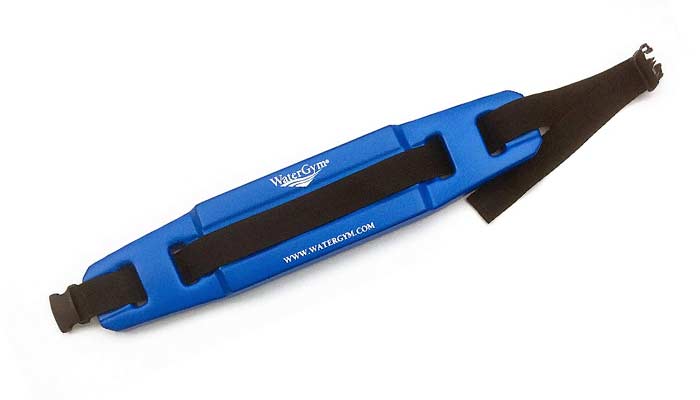
This recreational belt is one of the top highly-rated float accessory. It comes in small & Med/Large sizes and it’s made up of soft foam without coating.
According to the manufacturer, its new ergonomic tapered design comes with ultimate comfort and it won’t bruise, dig, pinch or tip you forward.
5. Aqua Fitness Deluxe Flotation Belt
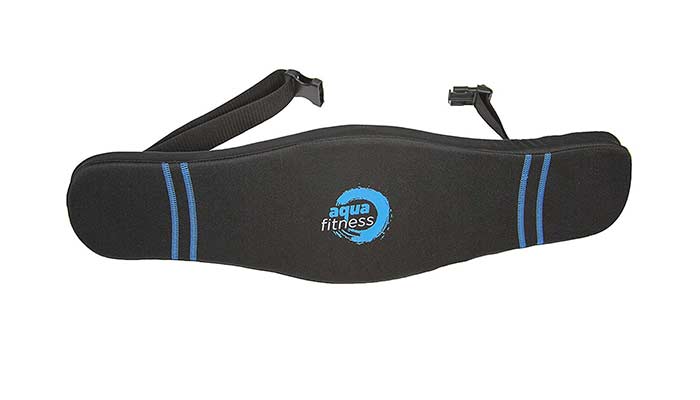
This is a comfortable belt that suspends your body in shallow or deep water. It comes with adjustable straps for a custom fit. Recommended for ages 14 and up.
It is made from chlorine-resistant, durable EVA foam.
The soft fabric lining and contoured design reduce irritation while improving comfort. Adjustable strap and buckle for custom fit.
6. Nash Hydroslide Vinyl Dipped Ski Belt
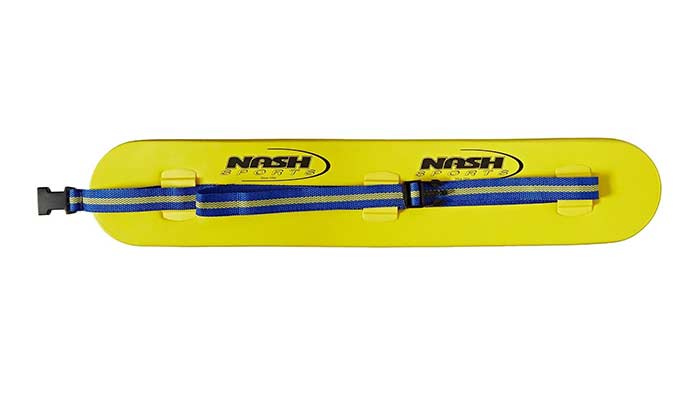
This is a one-strap ski belt that can be used for various watersports including snorkeling. It is made of Solid EVA vinyl-coated foam. Adjustable buckle fastener for a custom fit.
7. TRC Recreation Super Soft Buoyancy Belt
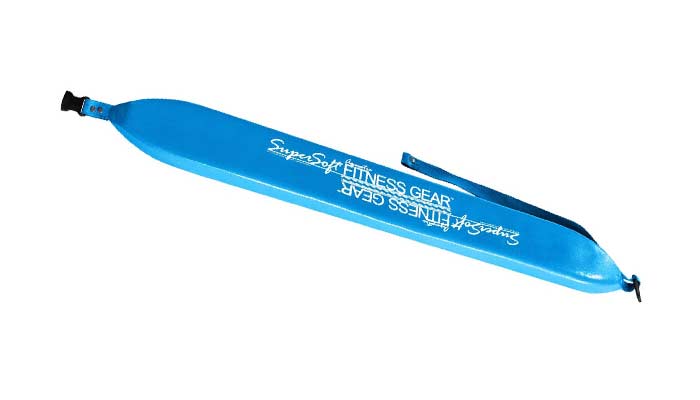
This bluish accessory is designed for buoyancy. It comes with an internal strap system and adjustable buckle fastener. Can fit waist sizes 26-34-inches.
8. TYR Aquatic Floatation Belt
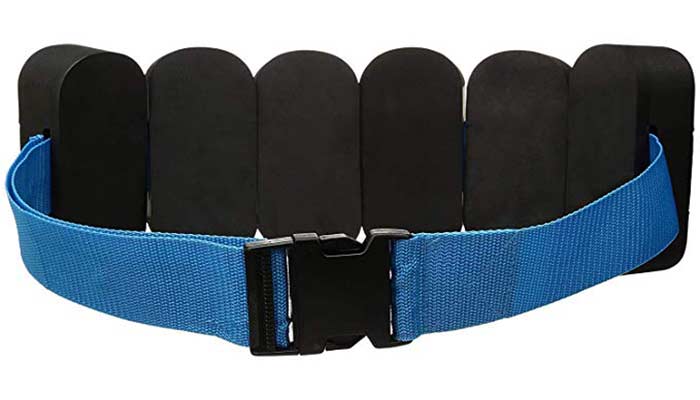
TYR is ergonomically designed Eva foam construction for soft and comfortable use. Designed to fit various body types with an adjustable belt and clip system.
9. Easysouthlife EVA Swim Belt Back Floating Foam
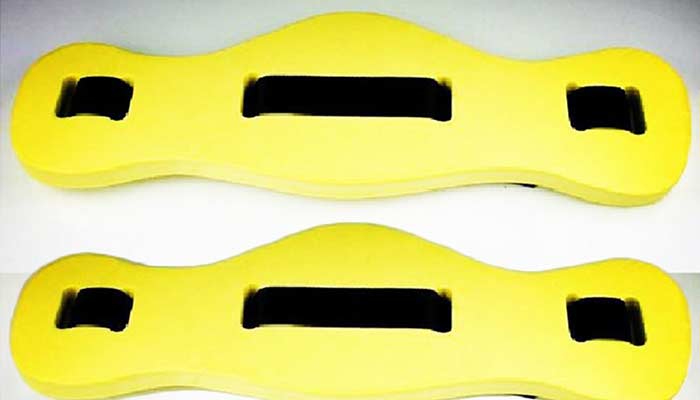
This belt is made from Soft, comfortable closed cell EVA foam and it is suitable for adults, youth and Children
10. Noa Store Swim Belt
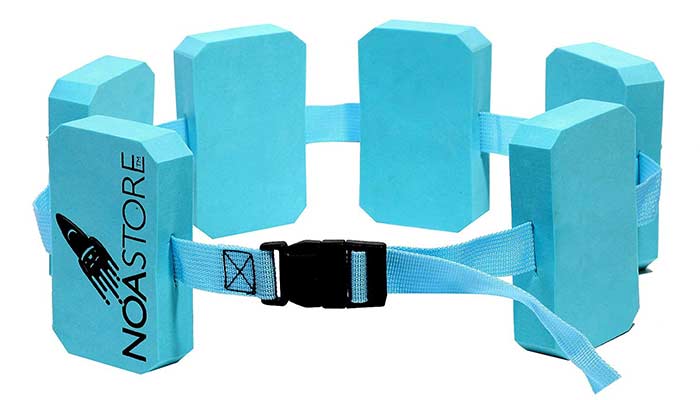
This light weight flotation belt comes with 6 pieces of closed cell foam on adjustable belt with quick release buckle closure. Provides a measure of support and security for the timid adult swimmer or new swimmer. Can be worn on front or back of waist.
The biggest benefit is that you may add blocks in front of your body or any other place of your choice to improve balance and good posture.
11. Aqua Sphere Aqua X GT Belt
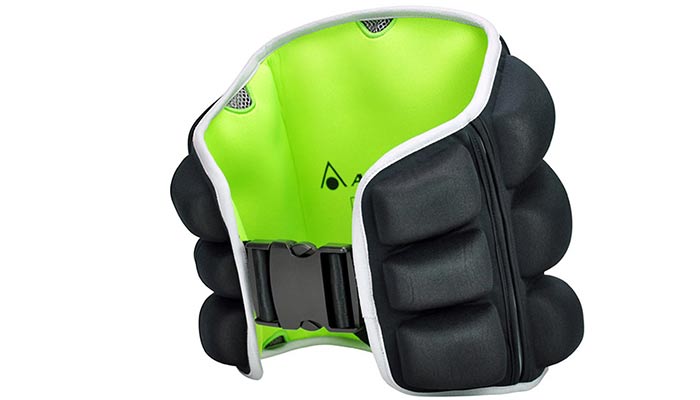
This comes with neoprene construction for a comfortable fit, articulated foam for an ergonomic fit with an easy-to-adjust, two-way buckle, mesh zones that accelerate drying, and stretch zones that prevent the belt from riding up
Flotation Belt Buying Guide
A flotation or buoyancy belt is literally a belt-like device that goes around your waist to help you float easily when you are in the water.
These belts are made out of closed-cell or EVA (Ethylene-vinyl acetate) foam. The foam is molded into super-light air-tight individual blocks or into a single long and thin block that can easily fit around your waist.
These foam belts float due to being lighter in density than water. This happens as air is trapped in the foam while it is being molded, and once set the foam forms a semi-rigid enclosure that keeps the air inside.
As useful as it is, the concept of a flotation belt is pretty simple. The foam from which the belts are made displaces a large amount of water and therefore increases your buoyancy, considerably.
This is not magic. It is just some physics. According to Archimedes’ principle, the more water an object displaces, the more buoyant it becomes.
When it comes to choosing your flotation belt, there are a few factors you need to consider. The following is a discussion on what you need to consider and the features you should look for in a good snorkeling buoyancy belt.
Construction Materials
As mentioned earlier, flotation belts are made out of foam. There are a few made out of polyester but this material is not as good as EVA.
What you should pay attention to is how the form is lined or coated. While an average coating won’t matter if you already have protective clothing, poor lining can irritate bare skin and cause a lot of discomfort.
The best option for bare skin are belts that are lined with vinyl. With this vinyl coating, the belt will not stick or pull on the skin, which can cause irritation or discomfort.
If the coatless and rough variety is the only option available be sure to wear a rash guard, shirt, or swimsuit.
Integrating the construction with elastic materials also improves comfort levels.
Design
The design can be viewed from different angles including color, shape, size for example small, medium and large. In terms of color, go for colors that make you visible; proactive safety is important!
One-size-fits-all is usually a buck-saving alternative but it may not be the best option for group snorkeling.
In terms of shape, there 3 common shapes or styles of belts for snorkelers.
The first one is a series of foam blocks that are held together with a belt.
The second is the skiing style which is a single long rectangular shape with a belt fastening;
The third is a molded form that securely attaches to your lower back; usually the best option for bigger snorkelers.
Type of Buoyancy
Generally speaking, there are 3 different types of belts to choose from: even-buoyancy, uneven-buoyancy, and adjustable flotation belts. What’s the difference? Each one is designed to support the body in different ways.
Even-buoyancy flotation belts
Even-buoyancy flotation belts evenly distribute their buoyancy effect, making them ideal for people who are insecure in water or have poor core strength.
These kinds of belts usually support the body from every angle and reduce drag significantly. They are ideal for beginners and seniors. One of the best even-cut belts you can find is the Hydro-Fit Wave belt.
Uneven-buoyancy flotation belts
Uneven-buoyancy belts, on the other hand, are for more athletic snorkelers. These belts usually give a bit more buoyancy towards the back causing your body to continuously lean forward.
This engages your core muscles quite a bit. The most popular uneven-buoyancy model on the market is the AQUAJOGGER Classic.
Adjustable flotation belts
Last, but not least, are the adjustable flotation belts. These belts usually contain 4-5 square modules that are attached to a woven belt. The great thing about this type of belt is that it’s highly adaptable.
You can evenly distribute the floats or you can move them to the back. Basically, adjustable belts can function as both even-buoyancy and uneven-buoyancy belts. It adapts to your skill level and needs.
Your Body Density and Belt Load Capacity
One of the first things you need to consider has nothing to do with the flotation belt itself. You have to think about your body density. What does that mean? Well, it basically means you have to decide how lean you are.
Depending on the amount of fat or lean muscle mass your body has, you might need to find a different kind of belt to suit your body type.
This brings up a good question: what do muscle mass and fat have to do with floating? Muscle and fat determine how well your body floats in water.
Remember that riddle our teachers used to trick us with when we were young? “What weighs more: a pound of steel or a pound of feathers”? Now that we are all grown up, we know they weigh the same, but they have different densities.
The same applies to muscles and fat. If you were to drop a pound of fat and a pound of muscle in water, the fat would float easily on the surface because fats have a lower density.
The more lean muscle mass your body has, the denser it is, and so you will need a certain kind of belt that gives you a little more buoyancy. On the other hand, the more fats you have, the more naturally buoyant you become.
For lean body types, one of the best floatation belts to consider is the AQUAJOGGER ACTIVE Belt. It is specially designed to give about 30% more buoyancy than your average floatation belt.
For less lean body types, you can go for the AQUAJOGGER Classic. It offers less buoyancy but it is ideal for body types that have a slightly higher percentage of fat.
If you’re having trouble determining your body type, why not try a simple float test? If you sink immediately, then you need an extra-buoyant belt. If you linger near the surface, go for low-buoyancy models.
Also do remember belts come with different weight limits. Some are meant for kids while others are designed for adults.
Be sure to pick one that is designed for your weight. You can as well opt for one with adjustable or removable sections of foam so that you can easily add or remove at your own comfort.
Fit
Some brands provide size charts to help you determine the right fit for your body type. Always read through the measurements to ensure it’s not too big or small for you. You can as well go for the belts that allow you to adjust the size.
Versatility
A belt with features that can allow it to be used in other water activities can a good choice. This is especially if you have intentions to learn the “other” water activities. In fact, most of these belts are meant for aqua fitness or water aerobics, but they can still be used as float aids when snorkeling.
Brand
The internet has made it possible for almost anyone to sell a product or service online. It may be quite challenging to choose between quality and inferior products.
Simply go for reputable brands that specialize in water sports accessories. Not all new brands will make inferior products. Take some time to go through reviews from verified buyers, especially on Amazon and other established online stores
FAQs
How Do I Properly Put On/Off a Float Belt?
Simply wrap the belt around your waist and over your lower back. Fasten using the quick-release buckle at the front. To remove it simply unbuckle from the front. Most of the belts come with instructions…do go throughthem.
Can I snorkel without a Float Belt?
Yes, you can snorkel without a float belt especially if you are an experienced swimmer or freediver. Buoyancy aids are in most cases meant for non-swimmers or people who lack enough energy or ability (seniors and handicapped) to confidently swim/move in the water.
A float belt can also help experienced swimmers who want to stay in deep waters for extended periods of time
Is a Snorkeling Belt a Life-saving Device?
Snorkeling belts are not considered life-saving personal flotation devices (PFD). They have not been approved by authorities in most countries. Be sure to snorkel in places you can be spotted easily.
Snorkeling Belt vs Swimming Belt vs Weight Belts-Differences?
While all three are belts, they have different purposes. You already know that a snorkeling float belt is mainly designed to keep you afloat.
A swimming belt is on the other hand designed to improve the swimmer’s endurance, strength, and performance. These are tools used for drilling. It adds resistance to the swimmer’s body, making them work harder so that they can improve.
Weight belts are mostly common in freediving and SCUBA diving. They balance buoyancy when diving underwater. This provides divers with a way to offset the buoyancy of the gases in their own body, wetsuit and air tank.
If you’re an experienced snorkeler possibly with some freediving skills, you can still use a weight belt such as Riffe Rubber Weight Belt to dive further below the surface to get closer to the underwater ecosystem.
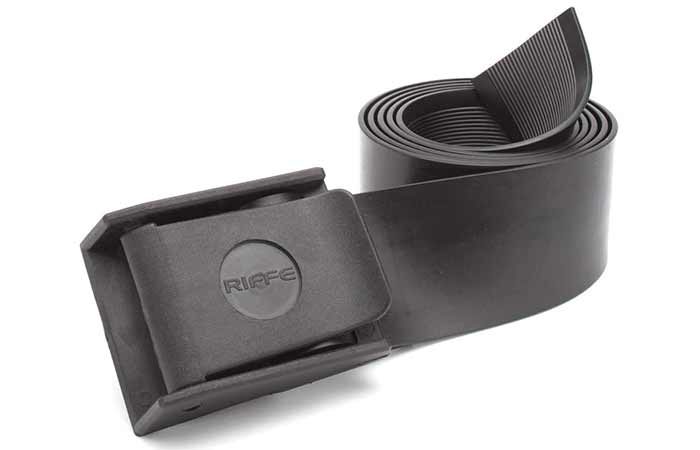
Another option is to try a weighted backpack. This allows you to adjust the weights according to your weight. One of the best for snorkelers is the Mares Weight Backpack

With the weights, you can dive deep down with less physical effort, meaning that you will hold your breath longer.
Another is
What ca I use instead of a Float Belt?
You can use a snorkel vest in place of a float belt. A snorkel raft board is another good flotation aid, especially for kids. You can also get a traditional life jacket, a pool noodle. For those who want something somehow advanced and automated, an underwater sea scooter is an option too
Flotation Belt Care Guide
The amount of effort you put into taking care of your float belt will determine how long it will serve you. Proper maintenance is necessary to keep the belt in good working condition. The following is a list of ideas and tips
- Rinse it off with fresh water immediately after each snorkeling session.
- Do not store it while wet. Simply leave it out in the open air to dry.
- If it wet, let dry in a well-ventilated room before storage
- Avoid direct sunlight. The UV rays can crack and destroy the foam making it not fit for use.
- Store it away from pets and children
More about Snorkeling
- Snorkeling-Meaning, History, Application Benefits & FAQs
- Do You Need to Know How to Swim to Snorkel
- How to Snorkel Safely: Beginner, Non-Swimmer & Advanced Snorkeling Guide & Tips
- How Much Does it Cost to Snorkel??
- Top Snorkeling Quotes, Funny Puns & Jokes for your Captions
- Snorkeling Vs Scuba Diving: Differences & Similarities
- Can You Snorkel while Pregnant?
- Can you Snorkel with Glasses & Contact Lenses?
Snorkeling Masks & Snorkels
- Traditional Dive Masks vs Full-Face Snorkel Masks
- Best Full Face Snorkel Masks
- Full Face Snorkel Mask Dangers, Deaths and Safety Tips
- How a Snorkel Works + Best Snorkels
Snorkeling Footwear & Garments
Gadgets & Gear Bags
- Best Underwater Cameras for Snorkeling
- Best Waterproof Bags & Backpacks for Snorkeling and Other Beach Activities
Snorkeling Destinations

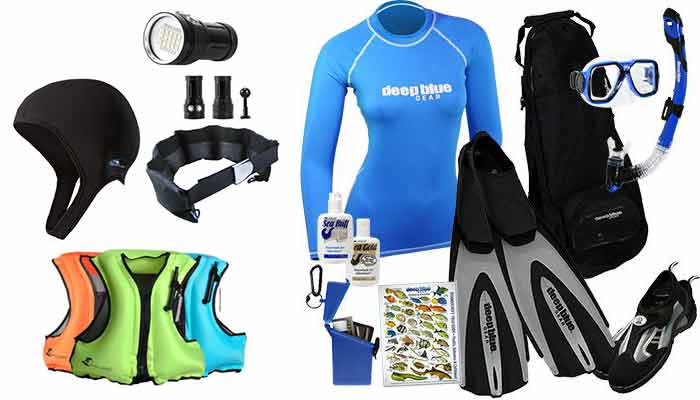
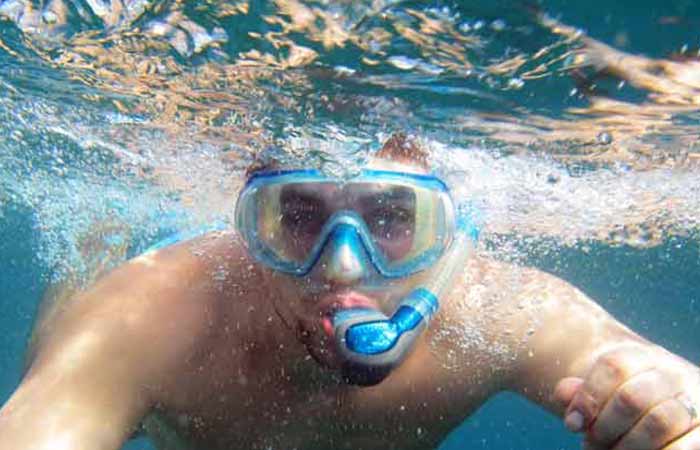
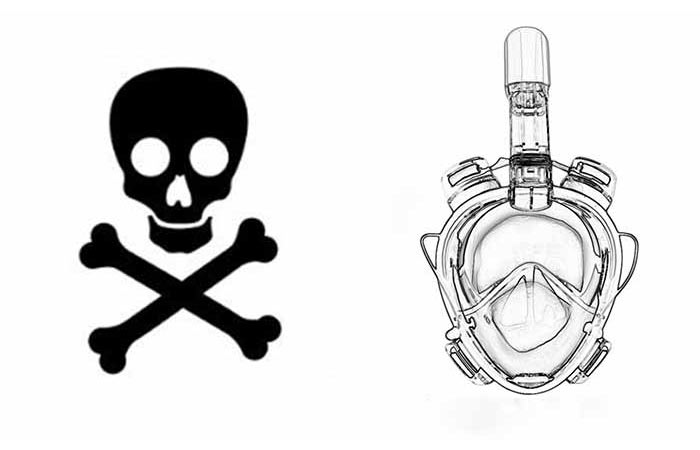
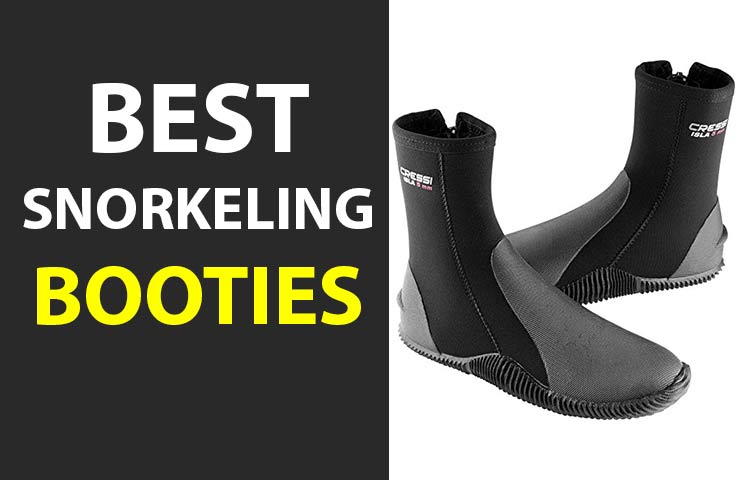

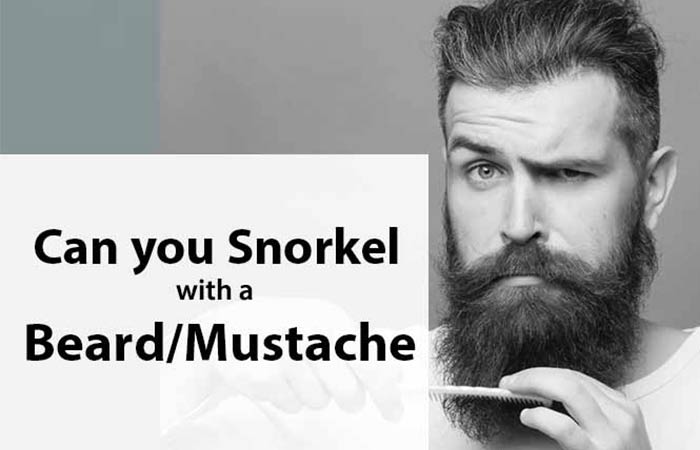
Very useful info
Was looking for good writeup. It was a enjoyment consideration them bow belt. Appearance complicated so that you can a lot more increased reasonable from you! Moreover, what exactly is sustain some sort of communications?